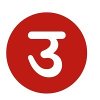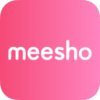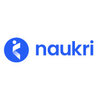Filter interviews by
EatClub Interview Questions, Process, and Tips
EatClub Interview Experiences
4 interviews found
I applied via Referral and was interviewed in May 2024. There was 1 interview round.
(2 Questions)
- Q1. Estimate the number of delivery rider required I’d domino’s want to open a store in CP Delhi
- Ans.
The number of delivery riders required for a Domino's store in CP Delhi depends on factors like store size, delivery radius, order volume, and peak hours.
Consider the size of the store and the delivery radius to determine the coverage area
Analyze the expected order volume based on foot traffic and online orders
Factor in peak hours and days with higher demand for delivery services
Take into account the average delivery t
- Q2. Organise a sports event
- Ans.
Organising a sports event involves planning, coordination, and execution of various activities to ensure a successful and enjoyable experience for participants and spectators.
Identify the type of sports event (e.g. marathon, football tournament, charity run)
Secure a suitable venue with necessary facilities (e.g. fields, courts, changing rooms)
Recruit volunteers and staff to assist with event logistics and operations
Pro...
Business Analyst Interview Questions asked at other Companies
3 question for 3 hrs , 2 medium and 1 hard level typr
(2 Questions)
- Q1. Minimum cost of rope cutting
- Ans.
The minimum cost of rope cutting involves dynamic programming to find the optimal solution.
Use dynamic programming to find the optimal solution
Consider the cost of cutting at each possible point
Keep track of the minimum cost as you iterate through the rope
- Q2. OS related questions
Software Developer Interview Questions asked at other Companies
I applied via Campus Placement and was interviewed in Jul 2023. There were 3 interview rounds.

2 questions both binary search paltform hakerrank
(5 Questions)
- Q1. Sql query on my project schema
- Q2. Find first missing positive integer with O(N)
- Ans.
Find the first missing positive integer in an array with O(N) time complexity.
Iterate through the array and place each element in its correct position (e.g. place 1 in index 0, 2 in index 1, etc.).
After rearranging the array, iterate through it again to find the first missing positive integer.
Return the missing positive integer found.
- Q3. Asked me design patterns i didnt know
- Q4. Asked me what is a decorator
- Q5. Asked me what is rest api
Skills evaluated in this interview
Software Development Engineer Intern Interview Questions asked at other Companies
I applied via LinkedIn and was interviewed in Sep 2023. There were 2 interview rounds.
There are 2 simple Binary Search problems like Book allocation and Koko eating banana.
(1 Question)
- Q1. Introduction DSA : Reverse a Linked List , reverse between two indexes , reverse in k groups , run all codes on compiler CS : Thread , Paging , TCP / UDP , Indexing , Normalisation Puzzle
SDE Interview Questions asked at other Companies
EatClub interview questions for popular designations
Top trending discussions






Interview questions from similar companies

I applied via Campus Placement
Interview Preparation Tips
Experience: They selected 10 students from our college from CS and IT .They are looking for guys with extra projects done during college .App development will be a bonus ,contribution to open source and competitive programming will help for shortlisting.
Some of my friends had research papers published and they too got selected.
Round: Test
Experience: Have to write code snippet for 4 questions in 45 minutes
1.Difference between hour hand and minute hand
2.longest palindromic sub string.
3.Product Array puzzle
4.Some question related to matrix
Tips: All question were from geeksforgeeks
So practice it well ..u will make through it
Round: Test
Experience: Long Discussion on projects
They will scan each and every line of your Resume ,so dont write bullshits..
I wrote about interest in AI and got screwed..Discussion on college projects and final year project.
Then asked me to design a snake and ladder game OOPS concepts
Told me to find sum of all elements of sub matrix..(hint pre-processing the matrix)
Asked me about sessions and cookies
Gave a query to write on database indexing (dont remember exactly)
Asked me the code of the difference between hour hand and minute hand and extended it wid the second hand
Asked me as how to implement a dictionary
asked about TRIES ,CODE SNIPPET ON THE SHARED DOCS
One of my friend was asked to implement (set) of STL
Tips: The interviewer was cool guy..helped me a lot always made me comfortable.Interact with them as much as possible
Round: Test
Experience: Wid the CTO of the company .
Started wid the projects again .ACID properties,Database transactions,Concurrency Control
Optimization in database.
Then he asked me to code a function
Given a hash function applied on letters of English words ,un-hash it.Took me 45 minutes to reach the solution ,he helped me a lot.
Asked me to write the code for diameter of a binary tree
Asked me write the code for Boolean Matrix
One of my friend was asked to a question in which there was a bug in a m*n matrix and we have to find the bug(hint dfs or bfs)
Tips: keep calm ,,just keep talking ad he will help u a lot...
Round: HR
Experience: This was the toughest round for me...I had cleared all the rounds but they rejected me in the HR round ,,,dont know where I screwed..Learn every thing of Zomato..
They offered me an internship and thereafter they would look to give a PPO ...!!!lets see what happens
Skills: Coding Skills And Knowledge On Data Structures
Duration: 3
College Name: NIT Srinagar

Interview Questionnaire
9 Questions
- Q1. Write a regex for email validation?
- Ans.
Regex for email validation
Start with a string of characters followed by @ symbol
Followed by a string of characters and a period
End with a string of characters with a length of 2-6 characters
Allow for optional subdomains separated by periods
Disallow special characters except for . and _ in username
- Q2. Parse the XML? and store the output in JSON. Discussed different approaches?
- Q3. Print prime numbers in a given range and optimize the solution?
- Ans.
Print prime numbers in a given range and optimize the solution.
Use Sieve of Eratosthenes algorithm to generate prime numbers efficiently
Start with a boolean array of size n+1, mark all as true
Loop through the array and mark all multiples of each prime as false
Print all the indexes that are still marked as true
- Q4. Puzzle – 25 horses – 5 lanes, find fastest 3 horses?
- Q5. Web related questions on Sessions and cookies?
- Q6. A lot of discussion on my resume, experience etc
- Q7. Find angle between hour hand and minute hand in clock if time is given? Write a program or pseudo code?
- Ans.
Find angle between hour and minute hand in a clock given the time.
Calculate the angle made by the hour hand with respect to 12 o'clock position
Calculate the angle made by the minute hand with respect to 12 o'clock position
Find the difference between the two angles and take the absolute value
If the angle is greater than 180 degrees, subtract it from 360 degrees to get the smaller angle
- Q8. A hash function was written to convert a string into a hash. Write a un-hash function to revert it(from hash to string)?
- Ans.
To un-hash a string, use a reverse algorithm to convert the hash back to the original string.
Create a reverse algorithm that takes the hash as input and outputs the original string
Use the same logic as the hash function but in reverse order
If the hash function used a specific algorithm, use the inverse of that algorithm to un-hash the string
- Q9. He discussed about expectations and role. Asked me if I have any questions. He said to me “yaha aana hai to marwani padegi. tyar ho”? I smiled and asked what are the work timings? He said 9-9 and I was kin...
Interview Preparation Tips
Skills: Web development, JSON, Algorithm
College Name: na
Motivation: Overall process was not very tough. But they have start up culture. People work their for 11-12 hours a day. Sometimes on Saturday as well. So people who are geeks or have nothing in life to do except their job can go and join
Skills evaluated in this interview
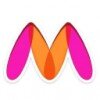
I was interviewed before Dec 2020.
(2 Questions)
Round duration - 120 minutes
Round difficulty - Medium
The Entire Test is held in HackerRank Platform. It has:
2 coding questions (one easy and one medium)
2 output questions(medium)
2 Aptitude(easy)
1 general Computer science(medium)
It took me 30 min for each coding questions. I did not know that general question is related to bash commands.
Tips: Practice the Warmup questions in Hacker Rank.
Do some Basic aptitude questions.
Thorough with the basic C and C++ concepts
- Q1.
Binary Tree to Doubly Linked List
Transform a given Binary Tree into a Doubly Linked List.
Ensure that the nodes in the Doubly Linked List follow the Inorder Traversal of the Binary Tree.
Input:
The fi... - Ans.
Convert a Binary Tree into a Doubly Linked List following Inorder Traversal.
Perform Inorder Traversal of the Binary Tree to get the nodes in order.
Create a Doubly Linked List by linking the nodes in the order obtained from Inorder Traversal.
Return the head of the Doubly Linked List as the output.
- Q2.
Unique Element in Array
Given an arbitrary array
arrconsisting ofNnon-negative integers where every element appears thrice except for one. Your task is to find the element in the array that appears onl... - Ans.
Find the unique element in an array where every other element appears thrice.
Use XOR operation to find the unique element.
Iterate through the array and XOR each element to find the unique one.
Return the unique element as the answer.
(2 Questions)
Round duration - 60 minutes
Round difficulty - Medium
It's completely around the data structures. The questions are a bit tricky but once u think without any tension u can get through easily. The interviewer is helpful and gives u few hints if u catch them at the right point of time u got it.
Tips: got through Data Structures and Algorithms Made Easy by Narasimha Karumanchi. It's a best book for the interviews.
- Q1.
Binary Tree Traversals Problem Statement
Given a Binary Tree with 'N' nodes, where each node holds an integer value, your task is to compute the In-Order, Pre-Order, and Post-Order traversals of the binar...
- Ans.
Implement a function to compute In-Order, Pre-Order, and Post-Order traversals of a Binary Tree given in level-order format.
Parse the input level-order tree elements to construct the binary tree.
Implement recursive functions for In-Order, Pre-Order, and Post-Order traversals.
Return the traversals as lists of lists for each test case.
- Q2.
Delete N Nodes After M Nodes in a Linked List
Given a singly linked list and two integers 'N' and 'M', traverse the linked list to retain 'M' nodes and then delete the next 'N' nodes. Continue this proces...
- Ans.
Traverse a linked list to retain 'M' nodes and then delete the next 'N' nodes, repeating until the end of the list.
Create a function that takes the head of the linked list, 'N', and 'M' as input parameters.
Traverse the linked list, retaining 'M' nodes and deleting the next 'N' nodes in each iteration.
Update the pointers accordingly to skip 'N' nodes after retaining 'M' nodes.
Repeat this process until the end of the lin...
(1 Question)
Round duration - 60 minutes
Round difficulty - Easy
The interviewer asked to put everything on the blackboard and write down the code of each and everything.
Question : Explain all the search algorithm you know with space and Time complexities.
Answer : Linear search : It is a sequential search algorithm where the entire array is traversed till the desired element is not found. Time complexity is O(N) and auxiliary space is O(1).
Binary search : In this algorithm, a sorted array is searched by repeatedly dividing the search interval in half.
Steps :
1. Initially the interval covers the whole array.
2. If the value to be searched is less than the item in the middle of the interval, narrow the interval to the lower half. Otherwise, narrow it to the upper half.
3. The process is repeated until the value is found or the interval is empty.
Time complexity is O(log n) and auxiliary space is O(1) in case of iterative implementation.
- Q1.
Maximum Frequency Number Problem Statement
Given an array of integers with numbers in random order, write a program to find and return the number which appears the most frequently in the array.
If multip...
- Ans.
Program to find the number with maximum frequency in an array of integers.
Create a dictionary to store the frequency of each number in the array.
Iterate through the array and update the frequency count in the dictionary.
Find the number with the maximum frequency in the dictionary and return it.
If multiple elements have the same maximum frequency, return the one with the lowest index.
Interview Preparation Tips
Tip 1 : Must do Previously asked Interview as well as Online Test Questions.
Tip 2 : Go through all the previous interview experiences from Codestudio and Leetcode.
Tip 3 : Do at-least 2 good projects and you must know every bit of them.
Tip 1 : Have at-least 2 good projects explained in short with all important points covered.
Tip 2 : Every skill must be mentioned.
Tip 3 : Focus on skills, projects and experiences more.
Skills evaluated in this interview

Interview Questionnaire
9 Questions
- Q1. All the leaf nodes of tree are doubly linked,print only the leaf nodes of a tree
- Ans.
Print only the leaf nodes of a doubly linked tree.
Traverse the tree and check if a node has no children and both left and right pointers are null.
If yes, then it is a leaf node and print it.
If no, then continue traversing the tree.
Use recursion to traverse the tree in a depth-first manner.
- Q2. LRU page Replacement Algorithm for large data
- Ans.
LRU page replacement algorithm is used to replace the least recently used page in memory with a new page.
LRU stands for Least Recently Used
It is a cache eviction algorithm
It is used to manage memory in operating systems
It works by keeping track of the pages that are used recently and the ones that are not
When a new page is to be loaded into memory, the algorithm checks which page has not been used for the longest time
- Q3. Given a linked list with 2 parameters m,n. Now start reversing the m nodes and leave n nodes and continue it till u reach the end
- Ans.
Reverse m nodes and leave n nodes in a linked list till the end.
Traverse the linked list till m nodes and reverse them
Traverse n nodes and continue reversing m nodes
Repeat the above step till the end of the linked list
Handle edge cases like m or n being greater than the length of the linked list
- Q4. Inorder Traversal of a tree
- Ans.
Inorder traversal is a way of visiting all nodes in a binary tree by visiting the left subtree, then the root, and then the right subtree.
Start at the root node
Traverse the left subtree recursively
Visit the root node
Traverse the right subtree recursively
Repeat until all nodes have been visited
- Q5. Inorder Travesal of a tree without recursion(write the code)
- Ans.
Inorder traversal of a tree without recursion
Create an empty stack and initialize current node as root
Push the current node to stack and set current = current.left until current is NULL
If current is NULL and stack is not empty, pop the top item from stack, print it and set current = popped_item.right
Repeat step 2 and 3 until stack is empty
- Q6. Given an array of numbers in which duplicates are there and one triplicate is there. find that number
- Ans.
Find the triplicate number in an array of duplicates.
Iterate through the array and keep track of the frequency of each number.
Return the number that appears three times.
If no number appears three times, return null.
- Q7. Explain all the serach algorithm you know with space and Time complexities
- Ans.
Explanation of search algorithms with their space and time complexities.
Linear Search - O(n) time complexity, O(1) space complexity
Binary Search - O(log n) time complexity, O(1) space complexity
Jump Search - O(√n) time complexity, O(1) space complexity
Interpolation Search - O(log log n) time complexity, O(1) space complexity
Exponential Search - O(log n) time complexity, O(1) space complexity
Fibonacci Search - O(log n)
- Q8. Given a situation and asks you which search algorithm suits the best in that situation
- Q9. Given an array of length n and in which numbers from 1-n will be there and each number can repeat any number of times find out which repeated more number of times
- Ans.
Find the most repeated number in an array of length n with numbers 1-n.
Create a dictionary to store the count of each number in the array
Iterate through the array and update the count in the dictionary
Find the key with the highest count in the dictionary
Interview Preparation Tips
Experience: Basically, it's not resume shortlist, it's a 9 pointer shortlist
Round: Test
Experience: The Entire Test is held in HackerRank Platform. it has
2 coding questions (one easy and one medium)
2 output questions(medium)
2 Aptitude(easy)
1 general Computer science(medium)
it took me 30 min for each coding questions.I was not known that general question is related to bash commands.
Tips: Practice the Warmup questions in Hacker Rank.
Do some Basic aptitude questions.
Thorough with the basic c and c++ concepts
Duration: 120 minutes
Total Questions: 7
Round: Technical Interview
Experience: It's completely around the data structures. The questions are a bit tricky but once u think without any tension u can get through easily. The interviewer is helpful and gives u few hints if u catch them at the right point of time u got it.There are 2 more questions which I haven't mentioned.
Tips: got through Data Structures and Algorithms Made Easy by Narasimha Karumanchi. It's a best book for the interviews.
Round: Technical Interview
Experience: The interviewer asked to put everything on the blackboard and write down the code of each and everything.
Tips: Go to the website -----/ and study all the interview questions and modules
Round: HR Interview
Experience: It's Technical+ HR interview all the technical questions went around resume. it went around 45 minutes they are very particular about what you wrote in the resume.HR questions are general like
whats your future plans
where will u see yourself in the office after 5 years?
Tips: please make sure that whatever you write in resume should be known to you very well.Don't write false things about yourself.And make sure you know completely about the projects you are going to write in resume(atleast the part you worked)
General Tips: Be sure of what you are saying. Don't be tensed and answer to your best.
Skills: Programming, Data Structures
College Name: VIT VELLORE
Skills evaluated in this interview

I was interviewed before Dec 2020.
(1 Question)
Round duration - 90 minutes
Round difficulty - Easy
Myntra had conducted a coding test on campus before the start of the placement season with 2 questions, one on stack and other on DP.
Tips : For the test, the DP question asked was pretty standard, on Longest Common Subsequence. The question on stacks, I don't remember what it was but it was also pretty straight forward. For the test, I would recommend to solve problem from GFG. If they do come to resume shortlisting, they are looking for people who have done good projects and internships.
- Q1.
Longest Common Subsequence Problem Statement
Given two strings
STR1andSTR2, determine the length of their longest common subsequence.A subsequence is a sequence that can be derived from another sequen...
- Ans.
The task is to find the length of the longest common subsequence between two given strings.
Implement a function to find the longest common subsequence between two strings.
Use dynamic programming to solve this problem efficiently.
Iterate through the strings and build a matrix to store the lengths of common subsequences.
Return the length of the longest common subsequence found.
(1 Question)
Round duration - 60 minutes
Round difficulty - Easy
The interview started off with questions on my general interest in Software Development. The first round had two coding questions, I was supposed to write the code on paper.
For the questions, they asked me to code the solution first. And then gave a specific input and asked me to demonstrate step by step in my code, how it would lead to the correct answer.
Tips: It's ok if you can't code a general solution, if you can write a code which works for the particular input they have given then also it's ok with them. But be thorough with Data structures.
- Q1.
Add Two Numbers as Linked Lists
You are given two singly linked lists, where each list represents a positive number without any leading zeros.
Your task is to add these two numbers and return the sum as ...
- Ans.
Add two numbers represented as linked lists and return the sum as a linked list.
Traverse both linked lists simultaneously while keeping track of carry from previous sum
Create a new linked list to store the sum, updating the value and carry as needed
Handle cases where one linked list is longer than the other by adding remaining digits with carry
(3 Questions)
Round duration - 60 minutes
Round difficulty - Medium
I wasn't asked to write any code in this interview. They asked me some questions on Machine Learning, because of my projects in them. Then they asked me if I knew graph algorithms. Since I knew BFS and DFS, I told them. They asked the difference between the two. Then they asked me if I knew how to find the shortest distance between two points in a graph. I didn't know Dijkstra's properly but I knew it worked on the greedy approach so was able to tell that. Then they asked me how would I find the second shortest path. I tried to answer it with the same greedy approach, but couldn't arrive at the complete solution.
Tips: They ask a tough theoretical question. It's ok if you don't know the answer, they only look for your approach.
- Q1.
BFS Traversal in a Graph
Given an undirected and disconnected graph G(V, E) where V vertices are numbered from 0 to V-1, and E represents edges, your task is to output the BFS traversal starting from the ...
- Ans.
BFS traversal in a disconnected graph starting from vertex 0.
Use a queue to keep track of nodes to visit next in BFS traversal
Start traversal from vertex 0 and explore its neighbors first
Continue exploring neighbors level by level until all nodes are visited
Ensure to print connected nodes in numerical sort order
- Q2.
DFS Traversal Problem Statement
Given an undirected and disconnected graph
G(V, E), whereVis the number of vertices andEis the number of edges, the connections between vertices are provided in the 'GR... - Ans.
DFS traversal to find connected components in an undirected and disconnected graph.
Perform DFS traversal on each vertex to find connected components
Maintain a visited array to keep track of visited vertices
Print the vertices of each connected component in ascending order
- Q3.
Dijkstra's Shortest Path Problem
Given an undirected graph with ‘V’ vertices (labeled 0, 1, ... , V-1) and ‘E’ edges, where each edge has a weight representing the distance between two connected nodes (X,...
- Ans.
Dijkstra's algorithm is used to find the shortest path from a source node to all other nodes in a graph with weighted edges.
Implement Dijkstra's algorithm to find the shortest path distances from the source node to all other nodes in the graph.
Use a priority queue to efficiently select the next node with the shortest distance.
Update the distances of neighboring nodes based on the current node's distance and edge weight...
Interview Preparation Tips
Tip 1 : Be thorough with Data Structures and Algorithms and also with your resume.
Tip 2 : Must do Previously asked Interview as well as Online Test Questions.
Tip 3 : Go through all the previous interview experiences from Codestudio and Leetcode.
Tip 4 : Do at-least 2 good projects and you must know every bit of them.
Tip 1 : Have at-least 2 good projects explained in short with all important points covered.
Tip 2 : Every skill must be mentioned.
Tip 3 : Focus on skills, projects and experiences more.
Skills evaluated in this interview

I was interviewed before Jan 2016.
Interview Preparation Tips
EatClub Interview FAQs
Recently Viewed
Tell us how to improve this page.
EatClub Interviews By Designations
Interview Questions for Popular Designations
EatClub Interview Process
based on 5 interviews
Interview experience
Interview Questions from Similar Companies
Fast track your campus placements
|
Senior Operations Manager
6
salaries
| ₹0 L/yr - ₹0 L/yr |
|
Software Development Engineer
5
salaries
| ₹0 L/yr - ₹0 L/yr |
|
Business Analyst
4
salaries
| ₹0 L/yr - ₹0 L/yr |
|
Chef
4
salaries
| ₹0 L/yr - ₹0 L/yr |
|
Delivery Boy
4
salaries
| ₹0 L/yr - ₹0 L/yr |

Zomato
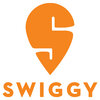
Swiggy
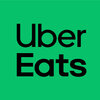
Uber eats

FoodPanda
- Home >
- Interviews >
- EatClub Interview Questions


